Liquid Soap Process and Formation Procedures for Kitchen and Clothes
How To Produce Liquid Soap In Nigeria (Step By Step Guide In 2022 )
This Article On The Production Of Liquid Soap Was Last Updated: September 2022.
The production of liquid soap is becoming very popular in the country today. Many use it for domestic purposes at home to wash clothes and kitchen utensils; restaurants and eateries are not left out too. One interesting thing that makes the demand for liquid soap to be very high is the fact that it is easier and cheaper to use than every other washing substance.
A lot of people are now venturing into the business. Capital for the production of liquid soap is usually meagre and one may not require any further teaching since the internet has made everything beautiful in this generation of ours.
This article was been carefully written to guide those who may wish to produce liquid soap by themselves. Note that there might be other methods used for the production of liquid soap, but this particular one is one of the best because it is the product of so much research and expertise of the author. You may, however, stick to whatever method will best work for you in future.
You can start the business today on your own and specialize in the production and marketing of liquid soaps to make a lot of money for yourself.
CHEMICALS REQUIRED FOR THE PRODUCTION OF LIQUID SOAP AND THEIR PROPORTIONS
The Chemicals required to produce liquid soaps are not far-fetched and are not expensive; they are readily available in our main or major markets. Just ask traders around where you can buy chemicals for liquid soap and you will be directed accordingly.
The under-listed chemicals are for the production of about 20 litres of soap. The vendors that sell the chemicals can advise you on the quantities for a smaller volume production like 15 litres or even 10 litres, or as the case may be:
- Nitrosol (or Antisol)…….………….1/8kg (i.e 125g).
- Caustic Soda…………………..………1/16kg (i.e 62.5g)
- Soda Ash (Sodium carbonate).1/8 Kg
- SLS (Sodium Lauryl Sulphate)..1/8kg
- Sulphonic Acid………………..………1 ½ Ltr
- STPP…………………………………………1/16Kg
- Texapon …………………………………1/8kg
- Foam Booster…………………………1/6 Ltr
- Formalin…………………………………10Cl
- Colour (As desired)
- Glycerine (Optional)
- Perfume (As desired)
- Vitamin E (Optional)
DESCRIPTION AND FUNCTIONS OF CHEMICALS USED FOR THE PRODUCTION OF LIQUID SOAP
Water:
Water is the main solvent needed for the process to dissolve the various ingredients. It is very essential in the production of liquid soap.
Nitrosol/Antisol:
Nitrosol is a thickener that is used in liquid soap production. It is a white, powdery substance that is derived from cellulose. Nitrosol is used to thicken liquids and also to stabilize emulsions.
And while there are a variety of thickening agents on the market, one of the most popular is Nitrosol.
It is commonly used as a thickening agent in a variety of products, including the production of liquid soap, hair shampoo, etc.
How does Nitrosol work as a thickener?
Nitrosol works by increasing the viscosity of a liquid. In other words, it makes the liquid thicker. This is accomplished by the Nitrosol molecules entangling with each other, which creates a sort of “net” that traps other molecules within the liquid. This increased viscosity makes the liquid soap thicker.
Antisol can also be used if Nitrosol is not available. The only difference between the two is that while Nitrosol will dissolve immediately in water, Antisol takes a longer time to dissolve in water.
Caustic Soda:
Caustic soda is one of the most important ingredients in liquid soap production. It is a very powerful cleaning agent that can remove dirt, grease, and grime from surfaces. It is also an effective disinfectant and can kill harmful bacteria and viruses.
Caustic soda is a whitish crystalline substance that looks much like a sample of granulated sugar. It is also known as sodium hydroxide and it forms a strong base when dissolved in water. This means that it will raise the PH of the soap, making it more alkaline.
As a strong Alkali, it can be corrosive if in contact with the skin, so it must be used with care. Liquid soap production requires a careful balance of caustic soda and other ingredients to create a product that is safe and effective.
Again, it is a very essential ingredient in the soap-making process. This is because it is a stain or dirt removal agent in the liquid soap. When used properly, it produces a high-quality, liquid soap.
Soda Ash (Sodium carbonate):
Soda ash is also known as sodium carbonate. It is generally found in a white powdery form, but it can also be found in a granular form with many coarse grains. It is soluble in water, and its solutions are basic in nature.
It has a wide range of uses, especially in many industrial and consumer applications, including glassmaking, detergent manufacturing, and water treatment.
Soda ash is another key ingredient in many types of liquid soaps, including dishwashing detergent, carwash liquid soap, shampoo, and bubble baths. It is a mild alkali that helps to break down grease and dirt, and it also helps to regulate the pH of the soap.
It is used in liquid soap production as a pH adjuster. It helps to bring the pH of the liquid soap to a neutral level, which is important for both the soap’s efficacy and the users’ safety.
It is very important to have it in your liquid soap so as to make it less likely to irritate the skin.
SLS (Sodium Lauryl Sulphate):
The Sodium Lauryl Sulfate (SLS) looks like rice grains and it’s whitish in colour too.
SLS is a synthetic detergent and surfactant. It is a widely used ingredient in many cleaning and hygiene products. It is the main active foaming agent in many products such as shampoos, body washes, laundry detergents, carpet cleaners, bubble baths, etc.
In Liquid Soap and dishwashing liquids production, it is used as a foaming agent and an emulsifier, helping to keep oils and dirt suspended in the soap solution until they are rinsed away. SLS is the principal ingredient responsible for the liquid soap’s foamy lather.
It is also used in other cosmetic and cleansing products such as shaving cream and toothpaste.
If you’ve ever used any liquid soap or any of the products mentioned above, chances are it contains Sodium Lauryl Sulfate (SLS).
Texapon:
Texapon also known as SLES (sodium lauryl ether sulfate) is a pasty and jellylike substance; a surfactant and emulsifier used in many cleaning and beauty products.
SLES is an inexpensive and effective way to cleanse and foam up products. It is also used as an emulsifier in cosmetics and as a detergent in shampoos and other hair care products.
As a surfactant, it helps to reduce the surface tension of water, making it more effective at cleaning surfaces. And as an emulsifier, it helps to keep oil and water from separating.
In the soap-making industry, Texpon helps to create a smooth, creamy consistency in liquid soaps that is perfect for both personal and commercial use as an effective cleansing agent that can remove dirt, oil, and other debris from surfaces.
Texpon also helps in improving the shelf life of liquid soaps, making them last longer without separating or deteriorating.
Many liquid soap producers don’t use Texapon and SLS together in the same production; reason because both perform almost the same function relating to foaming. So, they go with just one.
It is important to know that, both of these ingredients (Texapon and SLS) serve a specific purpose in the liquid soap production process and can have a big impact on the final product.
While Texapon is a surfactant, which means it helps to reduce the surface tension of the water, thus, allowing the soap to more easily penetrate the surfaces and get rid of dirt and oil. SLS, on the other hand, is the main foaming agent which is what gives liquid soap its characteristic lather. When combined with Texapon, it can create a very rich, creamy lather that is perfect for cleaning and cleansing.
While both of these ingredients are important for liquid soap production, they can also be used in the making of other products like shampoos, body washes, bubble baths, etc.
Sulphonic Acid:
This is a dark-looking liquid substance. Please the word spells S-U-L-P-H-O-N-I-C and not S-U-L-P-H-U-R-I-C. The latter is a very strong acid and can be very corrosive. Please beware!
Sulphonic acid is a type of organic compound that is typically used as a surfactant. It is also used in a variety of other industrial and consumer products, such as detergents, shampoos, hair dyes, and textile processing aids.
When used as a surfactant, sulphonic acid helps to lower the surface tension of water which allows it to disperse more easily and penetrate surfaces more effectively.
In liquid soap production, sulphonic helps to create a variety of different textures and consistencies. For example, it can be used to create a foamy, bubbly soap or a thick, creamy liquid soap.
Sulphonic acid is one of the key ingredients in liquid soap production. Apart from it being a powerful surfactant that helps to break down oils and dirt, and allows the soap to suspend these particles in water so that they can be rinsed away, it also provides antiseptic properties to the soap, which can help protect against bacteria and other germs or contaminants. These antiseptic properties, make it ideal for its use in soaps and shampoos.
STPP (Sodium Tripolyphosphate):
Sodium Tripolyphosphate (STPP) is a sodium salt of triphosphoric acid. It is another common ingredient in the production of liquid soap. It has the appearance of a white granular powder or substance and looks very much like the common table salt. It is soluble in water.
In many liquid soaps, STPP is primarily used as a strong cleaning agent and helps to improve the cleaning properties of the liquid soap. STPP helps the SLS to work to its full potential. It also helps to thicken the soap.
STPP is commonly used as a detergent builder or water softener. It is used in a variety of industries, including detergent manufacturing, textile processing, and also in some consumer products, such as dishwashing detergents and laundry detergents.
Foaming Booster:
This also comes in liquid form and has transparent look. As the name implies, it makes the liquid soap foam very well.
Foaming boosters are ingredients added to liquid soaps to increase their foaming and cleansing ability. When added to soap, they also help to lower the surface tension of the water, which allows for more bubbles to be formed.
Foaming boosters are often used in conjunction with other foaming agents such as surfactants (like SLS (sodium lauryl sulfate) or Texapon)
Formalin:
This is a preservative agent. It should be used if the liquid soap is to be stored for a long time like six months or more, especially if one is producing for commercial purposes. Please you can do without this chemical. “It is very harmful if abused, it can cause CANCER according to some schools of thought and research.”
Formalin is a liquid compound that is used as a preservative in many industries, including liquid soap production. It is a colourless, odourless gas that is dissolved in water to form a clear solution.
It is an effective preservative that helps to control the growth of bacteria and fungi and prevents the spoilage of products.
There have been some controversies concerning the use of Formalin in the production of liquid soap, some consumers are concerned about its potential health risks. (Formaldehyde, a gas that is released from formalin, has been classified as a human carcinogen by the International Agency for Research on Cancer.
There is no evidence that formalin exposure from personal care products, such as liquid soap, poses a health risk. However, it is important to carry out your own due research to determine if you must use it at all.
There are still other choices like essential oils and citric acid. The use of preservatives in Liquid Soap Production is not mandatory!
Colour:
Choosing the right colour for your product is an important aspect of liquid soap production, most especially for those going for commercial production. There are a few things to consider when selecting a colour for your liquid soap production, ensure you are going for water-soluble colours. Also, note that the chosen colour will have an impact on the final product.
There is a wide range of colours available, and it can be tricky to decide which one is right for your soap. The colour of your liquid soap can affect the overall look and feel of your product. If you want to have a natural-looking soap, you might want to choose a light colour. For more vibrant-looking soap, you may choose a brighter colour.
Colours for liquid soap production normally comes as a powder and should be diluted with water before adding to the soap mixture. The colour adds beauty to the finished product. Most liquid soap producers go with green colour.
Glycerine:
Glycerine is a clear odourless liquid derived from plant oil (or synthetically produced) and used in a variety of products, including cosmetics, food, and pharmaceuticals.
While glycerine is derived from plant oils, it can also be synthetically produced. However, vegetable glycerine is the preferred type to use in liquid soaps or liquid soap production, as it is more natural and eco-friendly.
Vegetable glycerine has a number of benefits. It is a natural humectant, meaning it helps to keep things moist. It is also an emollient, meaning it can help to soften and smooth the skin. In addition, vegetable glycerine is a good source of antioxidants and can help to protect the skin from damage.
While glycerine is not required in liquid soap recipes, it can be a nice addition if you’re looking for a more moisturizing soap. So if you’re interested in making your own soap at home, you may consider adding a little quantity of vegetable glycerine to it. This will help your skin to remain hydrated and soft after using the soap.
Perfume:
Perfume is important in liquid soap production because it can cover up the unpleasant smell of the soap base.
Carefully selected perfume will give your product a pleasant smell, especially to customers or other users of the product. Most people prefer lemon, pineapple, ambi pur. lavender or strawberry fragrance in their production.
So if you’re looking to add a touch of luxury to your liquid soap products, consider adding perfume. Perfume can help to give your soaps a beautiful scent, and can also be used to create unique, signature scents for your brand.
When adding perfume to liquid soap during production, it’s important to start with a very small amount and then increase gradually to the desired level of fragrance. This is because it can be very easy to overpower the soap with too much perfume.
Start by adding just a few drops of perfume oil to the soap base, and then increase the amount until you’ve reached the desired scent level.
Vitamin E:
Vitamin E oil is a natural oil that is extracted from the seeds of the vitamin E plant. This oil is then refined and used in a variety of products, including cosmetics, skincare products, and even some food items.
This yellowish-brown liquid is insoluble in water, and it is known for its ability to nourish and moisturize the skin. It is a popular ingredient in many anti-ageing products, shampoos, and other personal care products.
Vitamin E oil is often used as an additive in liquid soap production. Its main function is to act as an emollient, or moisturizing agent, and to protect the skin from damage, wrinkles, etc. Liquid soaps made with vitamin E oil are often more expensive than those made without it, but many people believe that the benefits of using a vitamin E-enriched liquid soap are worth the extra cost.
.
OTHER REQUIREMENTS FOR THE PRODUCTION OF LIQUID SOAP
- A big mixing bowl
- Containers
- Wooden spoon or stick for stirring (or a hand mixer for chemicals if you can afford one)
- A pair of Scissors
- Spoon
- Hand glove
- Nose mask
- Rubber gloves
- Measurement bowl or container or beak
- er
- Dissolve
- the Caustic Soda before the production process with 1 litre of water, possibly, allowing for 24 hours or overnight. You can still dissolve a few hours before the main production, the best result is however achieved if the time is longer. Please keep all chemicals out of reach of children. Caustic soda is corrosive to the skin.
- Dissolve the Soda Ash as above (i.e with 1 litre of water and keep overnight for proper dissolution)
- Dissolve the Nitrosol with 10 litres of water or lesser, in a bigger mixing bowl just before production. In case you want to opt for Antisol in preference to Nitrosol, dissolve it in the same amount of water and let it stay for at least 24-48 hours before production. Note: this should be properly dissolved and will look like a ‘starchy solution’ at the end.
- Dissolve the SLS (Sodium Lauryl Sulphate) in 1 litre of water to produce a clear solution before production; keep it aside. This should be done at least one hour before production. If you want it to dissolve well, dissolve in water and leave overnight.
- Dissolve the STPP (Sodium Tripolyphosphate) in 1 litre of water before production and keep it aside too. (Some people don’t use STPP for whatever reasons best known to them)
- Mix the Texapon and Sulphonic Acid together. Mix very well and dissolve further with 2 litres of water. Stirring should be done gently until the mixture is well dissolved and homogenous. Note that this particular step is an exothermic process; meaning that heat will be generated if you do it well.
- Dissolve the powdered colour with a small quantity of water and keep it aside.
- Gently pour the dissolved mixture of Sulphonic Acid and Texapon into the mixing bowl containing dissolved Nitrosol(or Antisol}. Stir very well and gently until the mixture becomes homogenous. You need patience here.
- Add the dissolved Caustic Soda into the mixing bowl above and stir very well.
- Add the dissolved Soda Ash next and stir very well until even.
- Next, add the STPP and stir properly
- Add the Dissolved SLS and stir more.
- Add Foam Booster to make it foam very well.
- Add your Formalin and keep stirring
- Vitamin E and Glycerine can be added at this point. Don’t forget to stir and stir.
- Finally, allow the lather formed to settle and disappear, then add the dissolved colour and perfume, and stir properly.
- Now add the remaining water. Do this gradually, small quantity at a time, stir each time and pay close watch on the thickness until the desired is attained.
- Your soap is expected to foam very well.
- It must have a sweet fragrance.
- The colour must be appealing.
- Must be durable.
- Must not cause any form of irritation to the skin.
PROCEDURE FOR THE PRODUCTION OF LIQUID SOAP
One really needs a great deal of patience during stirring to make sure any chemical added in any stage dissolves properly before adding the next one
For smaller volume production, eg 8litres or 10litres, follow the same process but work on your ratios. The vendors selling these chemicals usually sell them already measured according to the volume of liquid soap to be produced. (If you can, still get your measurement devices for perfection.)
Just tell them how much volume you want to produce and they will give you the number of chemicals you require. It is advisable to start with a small volume and grow bigger later. Measure out about 20 litres of water; then follow the under-listed steps:
Note: Following this order is very important; otherwise, you may end up producing something you may not like. Some people also believe that the SLS and Texapon should not be used together (that it is either you use Texapon alone or SLS alone, but not the two). As I mentioned earlier, there are diverse methods of production and one should stick to whichever works for him or her. For me, I use the two.
QUALITIES EXPECTED FROM A GOOD LIQUID SOAP
QUALITIES EXPECTED FROM A GOOD LIQUID SOAP
- Your soap is expected to foam very well.
- It must have a sweet fragrance.
- The colour must be appealing.
- Must be durable.
- Must not cause any form of irritation to the skin.
PRECAUTIONS AND SAFETY DURING PRODUCTION OF LIQUID SOAP
- Wear rubber gloves
- Use nose mask
- Carry out production in a well-ventilated environment with good illumination.
- In case of a chemical splash to the face or delicate part of the body, wash very well with plenty of water and see a physician as soon as you can.
- Keep all chemicals out of reach of children.
- Never taste any chemicals with the tongue.
- Wear your apron or other protective clothing before you commence production.
- Most importantly, use your head. Don’t play with chemicals, please.
- Etc
Thanks for your time! I hope this is helpful. You may leave further questions or inquiries in the comment section below, better still, reach us via WhatsApp on +2347036517985 for a swift response.


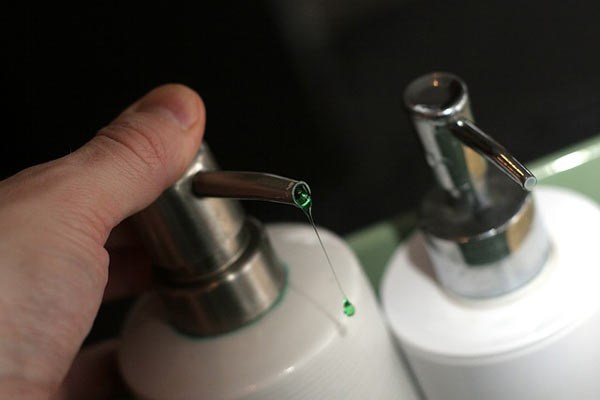


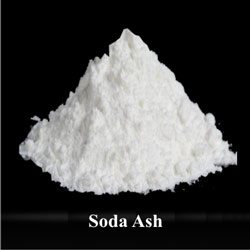



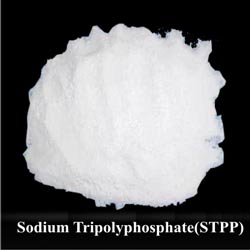
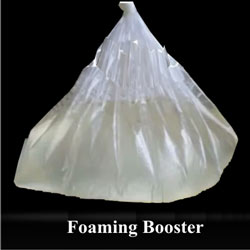




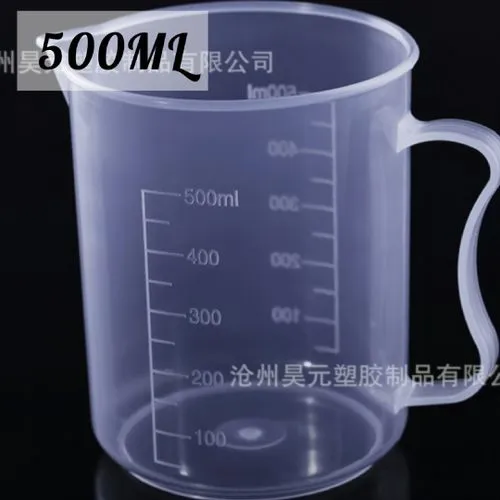




Comments
Post a Comment